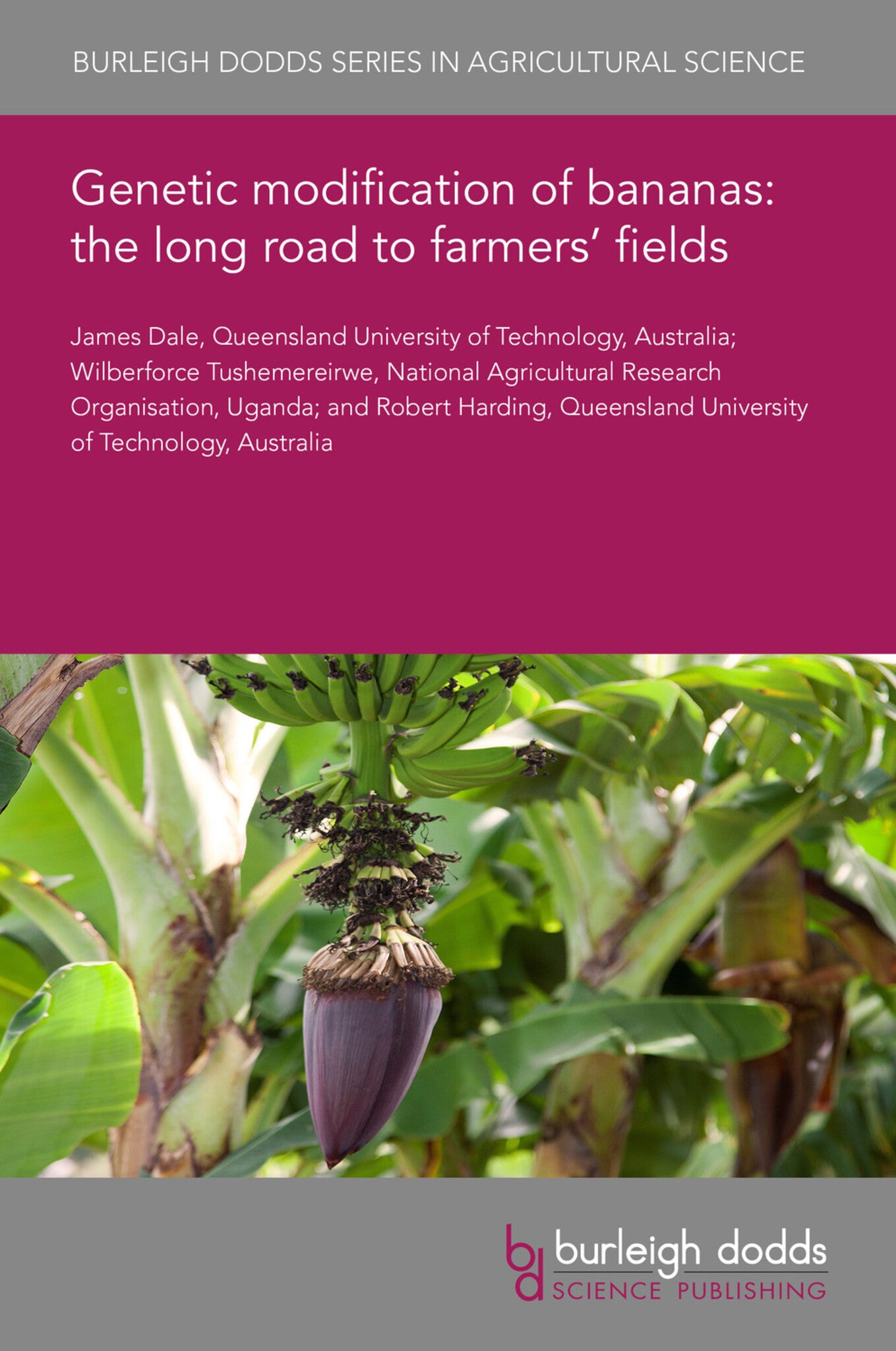We're sorry. An error has occurred
Please cancel or retry.
Genetic modification of bananas: the long road to farmers’ fields
Regular price
£25.00
Sale price
£25.00
Regular price
£0.00
Unit price
/
per
Sale
Sold out
Re-stocking soon
The great challenge for bananas into the future is to develop cultivars with multiple disease resistances, stress tolerance and enhanced fruit quality. The two major development strategies are conv...
Read More

Some error occured while loading the Quick View. Please close the Quick View and try reloading the page.
Couldn't load pickup availability
- Format:
-
23 November 2020

The great challenge for bananas into the future is to develop cultivars with multiple disease resistances, stress tolerance and enhanced fruit quality. The two major development strategies are conventional breeding which will deliver new cultivars and genetic modification which will deliver current cultivars but with added traits. Unlike many other crops, the genetic modification of bananas does not seem to be genotype dependent. As most current cultivars and landraces have at least one deficiency such as particularly disease susceptibility, the ability to modify a broad range of banana genotypes indicates that this technology can be and is being utilised to retain the amazing biodiversity already available. There are already many examples of genetically modified bananas with demonstrated glasshouse resistance to diseases such as Fusarium wilt race 1 and tropical race 4, banana bunchy top, banana Xanthomonas wilt, nematodes and to a lesser extent Black Sigatoka.

Price: £25.00
Publisher: Burleigh Dodds Science Publishing
Imprint: Burleigh Dodds Science Publishing
Series: Burleigh Dodds Series in Agricultural Science
Publication Date:
23 November 2020
ISBN: 9781786769497
Format: eBook
BISACs:
SCIENCE / Life Sciences / Horticulture, Commercial horticulture, TECHNOLOGY & ENGINEERING / Agriculture / Sustainable Agriculture, Botany and plant sciences, Sustainable agriculture, Agronomy and crop production

1 Introduction 2 Banana improvement by genetic modification and gene editing 3 Case study: biofortified East African Highland bananas 4 Future trends and conclusion 5 References



